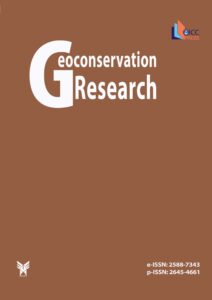Paleontological Heritage and its Conservation in the UNESCO European Geoparks
Authors
Abstract
Together, places of scientific, historical or cultural significance within a region and the artefacts uncovered therefrom and displayed in museums and collections make up the total heritage of the region in question. Seemingly lifeless places and objects become enlivened in UNESCO geoparks through the combined efforts– geared towards education and tourism – of managers, researchers and professors, supported by conservation work and presentation arrangements. In geopark terms, these are geoeducation, geotourism and geoconservation, respectively. This special issue of Geoconservation Research is dedicated to a unique domain of geodiversity and natural heritage: fossils. Through their sheer variety of forms, beauty, and sometimes rarity, as well as by the facts of geobiological history to which they attest, fossils – these vestiges of past life – constitute the most attractive facet of ancient geodiversity. The 60 articles contained in the present volume present fossils found in UNESCO European geoparks through their scientific and cultural significance, through their importance to geoeducation and tourism, and through the geoconservation efforts expended on them. To highlight the continuous evolution of life forms, the articles are grouped into distinct chapters corresponding to the principal divisions of geological time. These contributions weave together scientific relevance with managerial skill and educational innovation at the geoparks, linked to the portrayal of fossils as an essential element of regional heritage, thereby outlining aspects of the Earth’s biological past and providing practical ideas.
Read the full text of the articleKeywords
Main Subjects
References
Alcala I & Mampel I (coord.) (2004). Wonders of ancient life. Fossils from European Geoparks, Fundamental (26, I, pp. 1–166).




